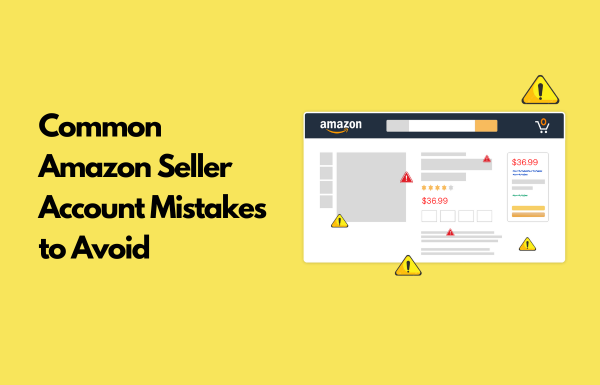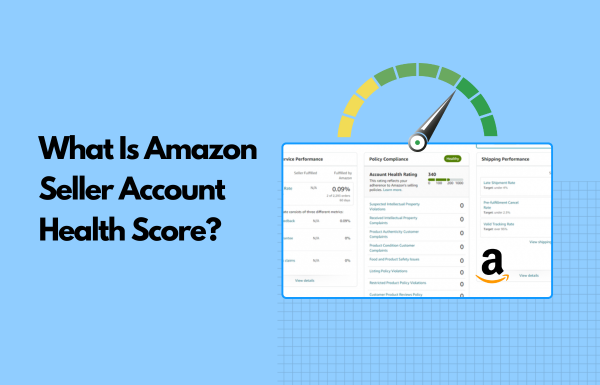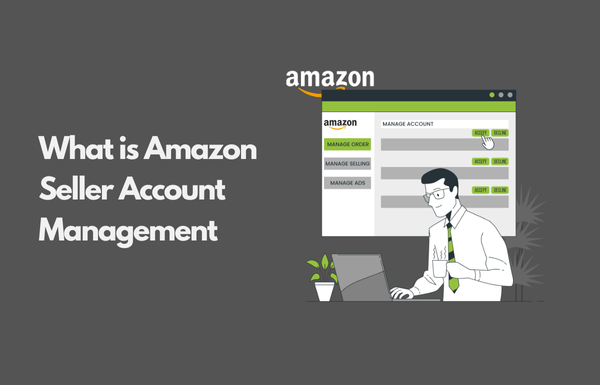Even small Amazon seller mistakes like missing a policy update or running out of stock can damage your rankings, cost you sales, incur fulfillment fees, or worse, trigger account suspension.
This makes it necessary to pay attention to certain issues that could lead to an Amazon seller account suspension.
Many sellers do not even realize the Amazon seller mistakes they are making until it is too late.
Well, these Amazon seller mistakes are 100% avoidable if you know what to look for, take proactive action, and pay attention to the details. That is precisely what this blog is here to help you do.
We have rounded up 7 of the most common account management Amazon seller mistakes, along with easy-to-follow fixes to help you avoid costly slip-ups and keep your business growing without interruption.
Ready to find out what they are? Let’s dive into these Amazon seller mistakes and how to avoid them.
7 Common Amazon Seller Mistakes for Account Management & Its Solutions
Even experienced sellers can slip up while managing their Amazon accounts. Below are seven common Amazon seller mistakes and tips to avoid mistakes that silently hurt your business, along with their solutions:
1. Poor Product Listing Optimization
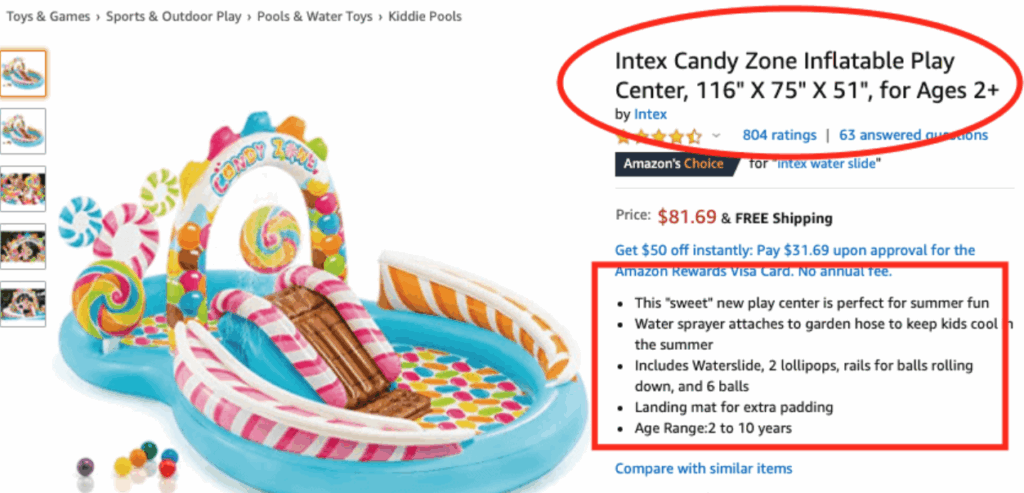
You might have a great product, but weak listings remain one of the biggest Amazon seller mistakes sellers make.
Many sellers assume that uploading a product with a few basic images and a generic title is enough to start making sales, but they often overlook essential aspects of listing products in the right way that help reach the right customers and cater to them correctly. Unfortunately, that’s rarely how it works on Amazon.
Without proper Amazon SEO optimization, your listing may never show up in search results, which is a common Amazon seller mistake.
And even if shoppers do land on your page, a weak listing fails to build trust, leading to low clicks, poor conversions, and wasted ad spend.
# Where Do Sellers Go Wrong?
In the rush to get products live, many sellers take shortcuts, often by copying competitors without doing proper research, one of the easiest Amazon seller mistakes to avoid.
They skip keyword planning, upload low-quality images, and write vague descriptions that don’t explain what the product is or why someone should buy it. Here are some of the most common Amazon seller issues:
- Unoptimized or keyword-stuffed titles
- Generic bullet points with no real benefits
- Weak product descriptions
- Low-resolution or irrelevant images
- No mention of return, refund, or replacement policies
These small issues add up and become costly Amazon seller mistakes that lower your conversions.
A weak Amazon product listing hurts you in two significant ways: it lacks detailed descriptions and fails to attract potential buyers.
- If you are not using the right keywords in the right places, your product will not show up when shoppers are searching.
- Even if people click on your listing, unclear images or vague descriptions make them bounce fast.
# How do you improve your product title and overall listing?
Your product listing needs to grab attention, a crucial area where many Amazon seller mistakes occur.
Here is how to clean it up:
- Optimize your title with the right keywords: Use tools like Helium 10 or Jungle Scout to find relevant, high-volume keywords. Then work them into your title naturally without overstuffing.
- Rewrite your bullet points with benefits in mind: Instead of only listing product features, tell buyers how the product helps them, what problem it solves, or why it’s better than others.
- Upgrade your product images: Use at least 5–7 visuals, including lifestyle shots, clear close-ups, size references, and any step-by-step usage visuals that can boost buyer confidence.
- Make your product description easy to understand: Use short paragraphs, line breaks, and simple formatting. Highlight the key benefits and answer common customer questions upfront.
- Be clear about returns and replacements: Let buyers know exactly what happens if something goes wrong. A short, transparent policy builds trust and reduces hesitation.
2. Ignoring Amazon’s Policies & Violating Terms of Service
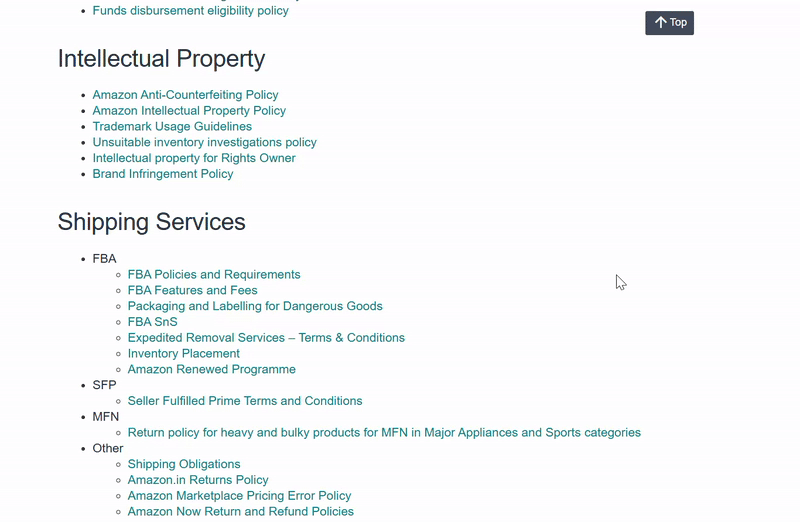
Amazon takes its rules very seriously, and so should you.
One wrong move, even a small one, can lead to suppressed listings, account warnings, or a full suspension without warning.
Even one overlooked policy can damage your account health in ways that are difficult to reverse.
# What causes Amazon seller mistakes like this one?
Because Amazon’s Terms of Service are lengthy and technical, many sellers unintentionally commit Amazon seller mistakes.
While others follow outdated advice, pick up risky tips from forums or social media, or assume that what competitors are doing must be acceptable.
Here are some of the most common policy violations:
- Using restricted words like “FDA-approved”, “best”, or “guaranteed”
- Opening multiple seller accounts without official approval is one of the riskier Amazon seller mistakes
- Selling in restricted categories without proper permissions
- Linking out to websites or social channels from product descriptions
- Faking or manipulating reviews
Most of these Amazon seller mistakes seem small at first. But they can spiral into major issues if ignored.
# How does it impact your business?
Breaking Amazon’s rules is one of the most expensive Amazon seller mistakes and can cause severe disruptions to your store:
- Product listings can be suppressed or removed entirely
- Your account may receive policy strikes or warnings because of recurring Amazon seller mistakes.
- You may lose Buy Box eligibility
- Temporary restrictions or permanent suspension can occur
- Reinstating your account can take weeks, with no guarantee of success
# How to Stay Compliant with Amazon’s Policies for Sellers?
The safest sellers are informed and proactive. Let’s understand how you can protect your account and keep Amazon on your side:
- Follow the policy updates regularly: Make it a habit to check Amazon’s Seller Central policy pages, especially those related to listings, restricted products, and messaging.
- Watch your wording: Avoid exaggerated claims or superlatives like “#1 product” unless you have clear, verifiable proof that meets Amazon’s standards.
- Play it safe, not smart: Don’t try to game the system: no fake reviews, no second accounts, no clever workarounds. Amazon’s bots are better than ever, and they don’t miss much.
- Use compliance tools: The Listing Quality Dashboard inside Seller Central highlights policy issues. Tools like Helium 10’s Listing Analyzer can even warn you if your listing contains risky keywords.
- Ask before you act: If something feels uncertain, a title, a keyword, or a review request, open a support ticket. It’s better to get a clear answer than make a costly assumption.
Policy violations are the #1 cause of Amazon seller account suspensions, and most are completely preventable. If your account health is already flagged or you’ve received warnings, act fast.
Learn how to avoid Amazon seller account suspension with our proven checklist that covers the most common triggers and how to fix them before Amazon takes action.
3. Neglecting Customer Feedback and Reviews
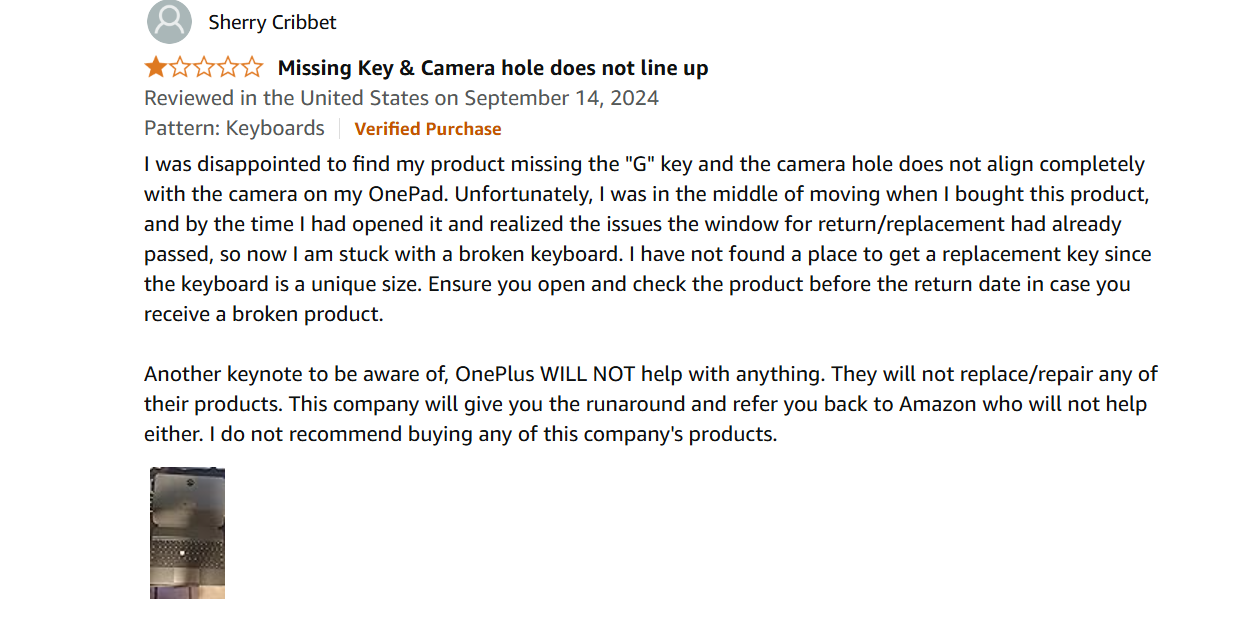
Many sellers focus on getting traffic and running ads, but overlook one critical part of long-term success on Amazon, i.e., paying attention to listening to their customers and learning how to manage inventory effectively.
Customer reviews are more than just star ratings. They’re a direct line to how your product is performing in the real world.
What customers say, whether good or bad, shapes how future buyers see your brand. And it also tells Amazon whether or not you’re delivering a positive experience.
Even a few unanswered complaints or a lack of reviews can raise red flags. And your listing slowly loses visibility, often before you realize anything’s wrong.
As per a recent study, 98% of customers read reviews before making buying decisions. Not acting on reviews is one of the easiest Amazon seller mistakes to fix.
So, if you leave negative or unanswered reviews of your customers, then it will take away future customers.
# Why Do Sellers Overlook This?
In most cases, it’s not intentional, but neglecting feedback is one of the easiest Amazon seller mistakes to avoid.
Sellers often get caught up in the day-to-day Amazon account management tasks, managing ads, updating listings, handling fulfillment, and forget to check in with what customers are saying.
Here are a few common reasons this happens:
- No system in place to monitor or respond to reviews
- Not following up post-purchase to request feedback
- Fear of drawing attention to negative reviews is another classic Amazon seller mistake.
- Lack of clarity on Amazon’s review policies
- Assuming one or two bad reviews won’t hurt
In reality, reviews are one of the most actionable forms of feedback you have, and ignoring them is a missed opportunity.
# How does it affect your business?
When you ignore customer feedback, you limit your ability to grow and save money. Here are some of the ways it can hurt your store:
- Fewer conversions due to a lack of trust
- Low review volume compared to competitors
- Unresolved product issues that affect future buyers
- Missed insights that could improve your listing or product quality
- Lower rankings caused by negative customer experience signals
Buyers rely on reviews to make confident decisions. If they see unanswered complaints or too little feedback, one of the costliest Amazon seller mistakes, they are more likely to buy from someone else.
# What can you do to Get Back on Track?
Make reviewing management a part of your routine. This helps you maintain your reputation, allows potential sales, and prevents long-term problems.
- Monitor reviews regularly: Use Seller Central or tools like Helium 10, FeedbackWhiz, or FeedbackFive to track new feedback and identify patterns.
- Request reviews the right way: Use Amazon’s “Request a Review” button, or automate the process with approved third-party tools to increase your review volume.
- Respond professionally: Try to address critical reviews with a calm, solutions-focused tone. This shows future buyers that you care and are willing to make things right.
- Act on recurring feedback: Are buyers consistently mentioning unclear instructions, poor packaging, or missing features? Use this insight to update your listing, improve your product, or adjust your operations.
- Keep refining your listing: If feedback reveals gaps, whether in the bullet points, images, or product description, or missing Amazon A+ Content, update accordingly to clarify expectations.
Poor ratings often reveal fixable product or listing issues. If you’re struggling with low review volume or negative feedback, improving your listing quality can help.
Check out our guide on Amazon A+ content to learn how enhanced brand content builds trust, improves conversions, and encourages more positive reviews.
4. Mismanaging Inventory & Frequent Stockouts

Inventory might not seem like the flashiest part of selling on Amazon, but it’s one of the most critical aspects to manage inventory effectively. Running out of stock doesn’t just pause your sales. It drags down your organic ranking, kills your ad performance, and knocks you out of the Buy Box. And if you overstock? You tie up your cash and get hit with high FBA storage fees.
Either way, poor inventory management chips away at your growth, quietly but consistently.
# Why Do Sellers Struggle With Inventory?
Many sellers rely on instinct rather than systems, leading to frequent Amazon seller mistakes in inventory management.
They reorder too late, forget to track lead times, or underestimate how quickly certain products sell, especially when a campaign boosts traffic.
Here are a few reasons this issue shows up:
- No real-time restock alerts or planning tools
- Delays from suppliers or shipping are not accounted for
- Lack of visibility into sales velocity
- Failure to reduce ad spend when the stock is low
- Emotional ordering, stocking based on gut feel, not data
What starts as a minor miscalculation can snowball into lost sales and long-term ranking issues.
# How Inventory Mismanagement Affects Your Business?
When you don’t have the right inventory at the right time, your store’s performance takes a hit, a major Amazon seller mistake, which leads to:
- Lost sales when customers can’t purchase your product
- Drop in organic rankings as availability impacts visibility
- Buy Box loss, reducing your conversions
- Wasted ad spend on listings that are low or out of stock
- High FBA storage fees from unsold inventory
- Cash flow strain from inventory that isn’t moving is one of the silent Amazon seller mistakes
- Customer frustration, leading to cancellations or negative reviews
Plus, Amazon has introduced low-inventory-level fees, which means you now pay extra if your inventory falls below certain thresholds.
# How to Regain Control of Your Inventory?
Smart inventory management isn’t just about refilling when you run out; it’s about forecasting, preparing, and reacting before problems show up.
Here’s how you can take control:
- Use real-time inventory tools: Tools like SoStocked, RestockPro, or Amazon’s Inventory Planning dashboard help you monitor stock, predict demand, and set custom restock rules.
- Track sales trends and seasonality: Use past sales data to anticipate busy periods like Q4, Prime Day, or holidays. Plan reorders well in advance.
- Maintain buffer stock for bestsellers: Always keep extra units for your fastest-moving SKUs so you don’t run into unexpected sellouts.
- Set low-stock alerts: Get notified when inventory dips below a safe threshold. This gives you time to reorder before you hit zero.
- Pause PPC for low-inventory SKUs: Use automation tools like Atom11 to pause ads when stock is critically low. This prevents wasted spend and avoids spiking demand you can’t fulfill.
5. Inadequate Product & Market Research Before Launch
One of the fastest ways to fail on Amazon is to choose the wrong product, leading to excess stock that doesn’t sell.
Many sellers jump into a niche based on personal preference, trending topics, or surface-level demand.
But without understanding the competition, margins, and buyer behavior, they risk launching a product that will not sell, scale, or profit.
Launching a product without deep market research is like throwing darts in the dark. You might get lucky, but chances are you’ll end up with slow sales, tight margins, and inventory that just sits there.
# Why do Amazon sellers make mistakes like this?
Many sellers are in a rush to get to market, which often results in avoidable Amazon seller mistakes. Some rely on instinct, while others mimic what competitors are doing without understanding the full picture.
Here are some common Amazon seller mistakes before launch:
- Selecting products based on trends, not sustained demand
- Overlooking saturation or high competition in the category is another costly Amazon seller mistake during research
- Miscalculating profit after fees, shipping, and ad spend
- Ignoring buyer pain points hidden in customer reviews
- Failing to identify keyword or listing opportunities
- Placing large orders without testing on a smaller scale
# How Does It Affect Your Business?
A poorly researched product launch can create long-term setbacks:
- Low or stagnant sales due to weak demand or niche overcrowding
- High return rates from unmet expectations or unclear listings
- Negative reviews that damage your product’s reputation early
- Inventory pile-up in FBA, leading to high storage fees
- Ad spend with little ROI, especially when your product lacks positioning
- Cash flow issues make it harder to invest in better opportunities
When a product fails to perform, it drains time, capital, and momentum, classic Amazon seller mistakes that are hard to recover from.
# How to Launch Your Product with Confidence?
Launching a successful product starts with smart research. Here’s how to get it right:
- Use the Right Tools: Platforms like Helium 10, Jungle Scout, or AMZScout can show you demand, keyword trends, estimated sales, and how competitive the niche is.
- Study Competitor Listings: Analyze the top sellers. What are they doing well? What are customers unhappy about? Look for gaps you can fill.
- Know Your True Costs: Include all costs — manufacturing, FBA fees, shipping, packaging, returns, and ad spend. Use Amazon’s FBA calculator to check profitability.
- Start Small, Test Early: Launch with a small order and limited ad budget. Measure conversions, gather feedback, and validate the product before scaling.
- Differentiate Your Product: Avoid launching generic items. Add value through quality, bundling, packaging, or better presentation.
- Get Expert Help if Needed: If research is too complex, hire an Amazon VA or product sourcing expert to guide you. A small investment can save thousands later.
6. Ignoring Key Account Health Metrics (ODR, LSR, IPI, etc.)
Making sales is great, but staying on Amazon is even better.
Many sellers focus so much on ads and product listings that they completely forget about one of the most important parts of their business: account health.
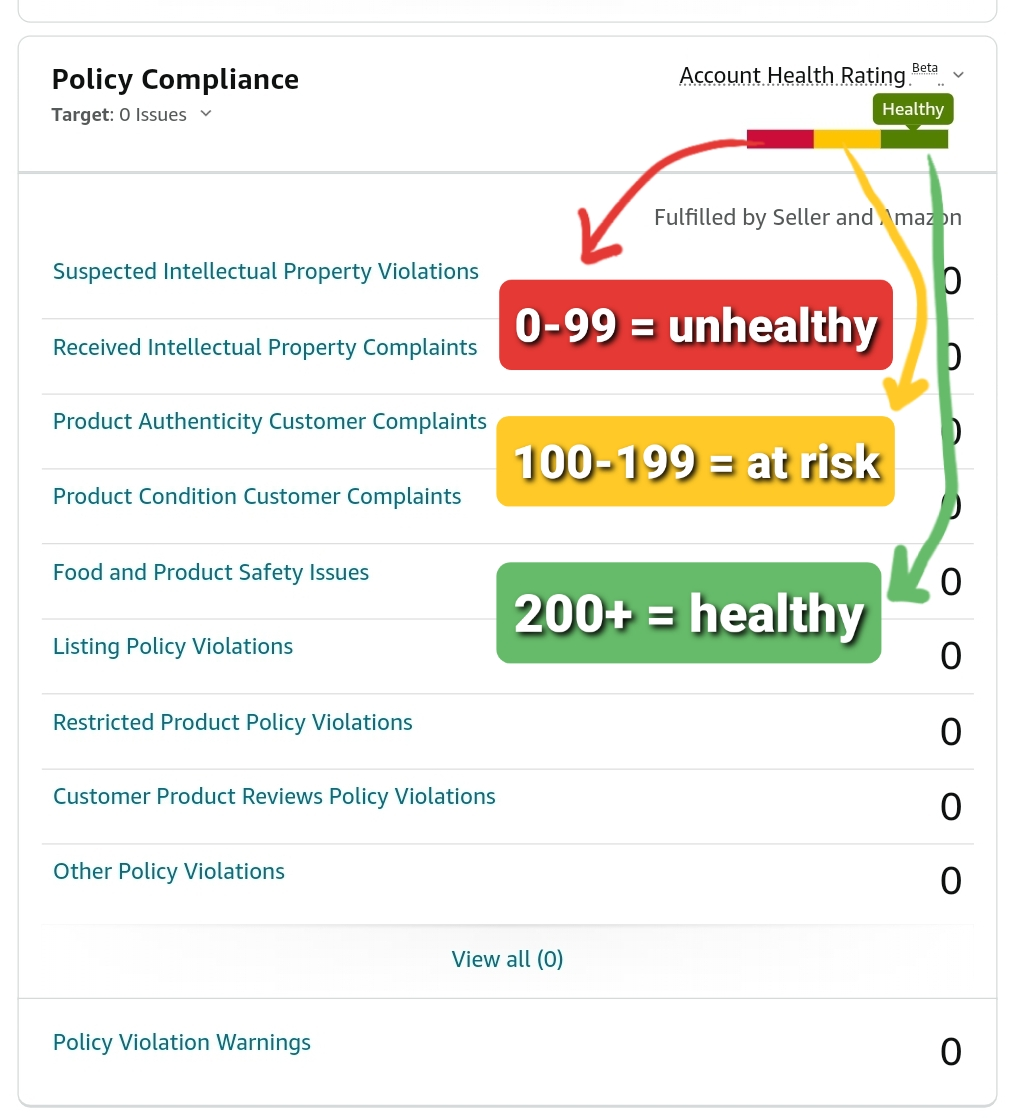
Amazon tracks your performance with specific metrics like Order Defect Rate (ODR), Late Shipment Rate (LSR), and Inventory Performance Index (IPI).
If even one of these slips too far, your listings can disappear, and your account could be at risk, without warning.
# Why Do Sellers Ignore This?
This issue usually comes down to a lack of awareness and is one of the most overlooked Amazon seller mistakes. Some common reasons are:
- Sellers don’t know where to check these metrics
- They assume good sales equal good performance
- No internal routine exists to track account health
- Operational issues go unnoticed or unreported
- Poor coordination between customer service and fulfillment teams
Unfortunately, by the time a warning appears, the damage is often already done.
# What Happens If You Don’t Watch These Metrics?
Failing to monitor Amazon seller account health can lead to fundamental Amazon seller mistakes that risk your entire business.
- Suppressed or delisted products
- Loss of Buy Box visibility
- Increased returns, A-to-Z claims, or negative reviews
- Account warnings or full suspension
- Slower eligibility for Amazon programs like Brand Registry or global expansion
- Long-term brand damage due to poor customer experience
# How to Stay on Top of Your Account Health?
You don’t need fancy software or a big team to stay compliant and avoid costly Amazon seller mistakes; just a few smart habits can go a long way:
- Monitor Your Account Health Dashboard Weekly: Log into Seller Central and review your performance under:
- Order Defect Rate (ODR) – keep below 1%
- Late Shipment Rate – keep below 4%
- Cancellation Rate – keep below 2.5%
- Customer Response Time – respond to all messages within 24 hours
- Invoice Defect Rate – especially for B2B accounts
If any metric is nearing the limit, take action immediately.
- Set Up Internal Alerts: Use spreadsheets, team dashboards, or software tools to track changes. Set alerts for delayed shipments, unresolved customer messages, or rising return rates.
- Strengthen Customer Service: Respond promptly and professionally to every message. Handle claims or complaints with clarity and care. Train your support team or VAs to recognize and resolve issues before they escalate.
- Use FBA to Improve Fulfillment Metrics: If logistics are causing delays or shipment issues, Fulfillment by Amazon (FBA) can help stabilize performance and reduce operational risk.
- Analyze and Act on Data: If cancellation rates are rising, investigate inventory gaps. If customer complaints are increasing, revisit product quality or packaging. Use these insights to make informed operational improvements.
Maintaining healthy account metrics isn’t just about avoiding suspension; it’s about staying competitive. Many successful sellers outsource account health monitoring to focus on growth. Wondering if it’s worth it?
Read our breakdown on is it worth investing in Amazon seller account management to see how professional management prevents costly mistakes and improves overall performance.
7. Ineffective PPC Campaign Management
Running ads on Amazon is essential. But just turning them on isn’t enough.
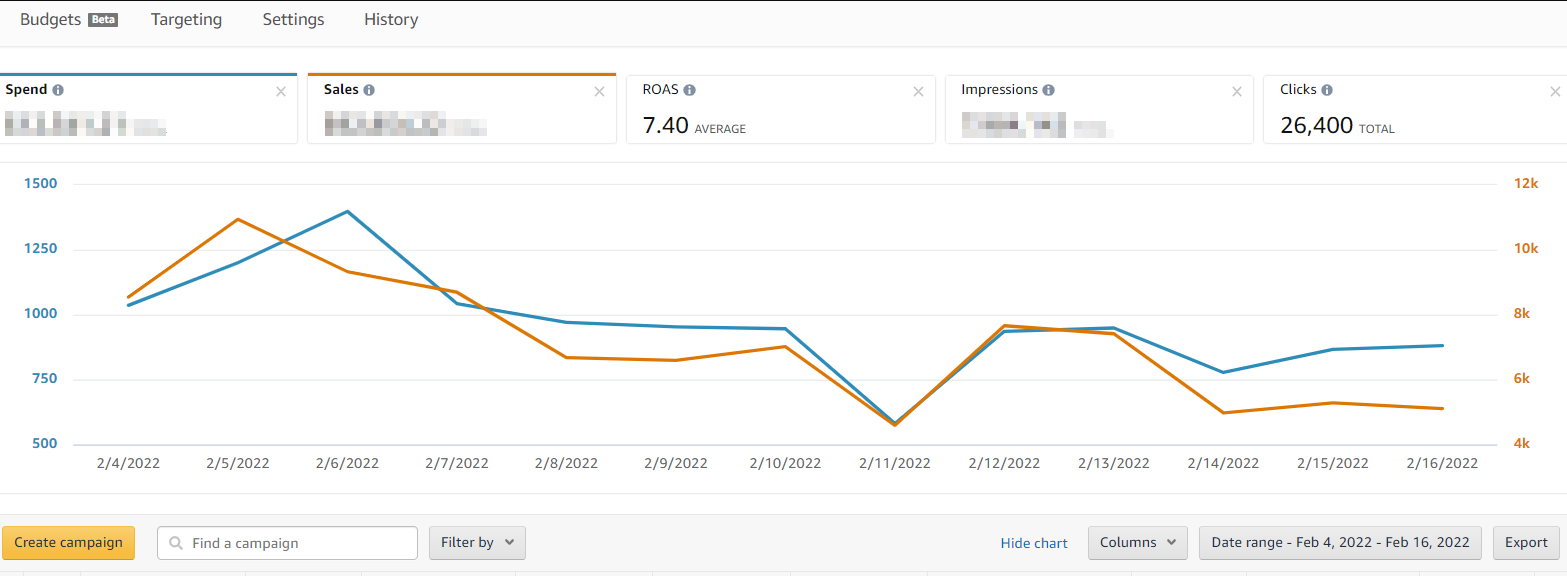
Many sellers either “set and forget” their campaigns or throw money at Amazon PPC advertising without a clear strategy.
If you don’t manage them properly, they can quickly drain your money without bringing results.
# Why Do Sellers Struggle With PPC?
Most sellers struggle with PPC because they fall into common Amazon seller mistakes, like:
- They only run automatic campaigns and never test manual ones
- They don’t check results or adjust bids regularly
- They skip adding negative keywords (which filter out irrelevant traffic)
- They don’t have clear goals like target ACoS (advertising cost of sales)
- They keep paying for poor-performing ads instead of pausing them
Without a clear plan that includes high-converting keywords, your ad budget goes to waste.
# How Poor PPC Management Hurts Your Business?
If you’re not careful, ineffective ads are one of the biggest Amazon seller mistakes that can quietly drag your business down:
- You waste money on clicks that don’t convert
- Your organic ranking drops because traffic isn’t converting
- Your ACoS goes up, and your margins shrink
- Scaling new products becomes expensive and unpredictable
- You lose the Buy Box and miss out on potential sales
# How to Make Your PPC Work for You?
To turn things around and get more from your ad spend, here’s what to do:
- Define Clear Objectives: Start with your goal: Are you trying to rank a new product, drive visibility, or maximize profits? Use that to set your target ACoS (Advertising Cost of Sale).
- Combine Automatic and Manual Campaigns: Automatic campaigns help uncover keyword opportunities. Then shift to manual campaigns to gain control over targeting, bidding, and spend.
- Monitor and Optimize Weekly: Review campaign data regularly. Look at impressions, CTR, conversions, and ACoS. Pause underperforming keywords and adjust bids based on results.
- Add Negative Keywords: Prevent waste by excluding terms that don’t convert. Negative keywords protect your budget and improve ad efficiency.
- Test Creative and Formats: Try Sponsored Brands and Sponsored Display. Run A/B tests on images or headlines to see what drives better performance.
- Consider Expert Help: If PPC feels overwhelming, work with an experienced PPC specialist or agency. Even a modest budget can deliver results when guided by the right strategy.
PPC management is one of the most time-consuming parts of selling on Amazon. Between bid adjustments, negative keywords, and ACoS optimization, it’s easy to lose track. If you’re considering professional help, understand the investment first.
Check out our guide on Amazon account management services cost to see what professional PPC and account management typically costs and what ROI you can expect.
Now that you’ve seen the most common Amazon account suspension, Amazon seller mistakes, and how to avoid them.
The real question is: do you have the time, tools, or team to handle it all on your own?
If not, that’s exactly where Mint Your Store comes in.
Let us show you how we can help you steer clear of these costly missteps and Amazon seller mistakes to scale your business with confidence.
How Mint Your Store Can Help You Fix These Amazon Seller Mistakes?
Mint Your Store can take away complexity from your Amazon business so you can focus on growing your brand.
From listing optimization and ad campaigns to inventory, compliance, and account health, our team keeps your store running smoothly and profitably. Who’s got your back?
- Performance-driven account managers
- Advertising and PPC specialists
- Listing & catalog optimization experts
- Inventory and operations strategists
- Data analysts who track what matters
From listing fixes and ad optimization to inventory control and account health tracking, we manage it all while you focus on growing your business. If you’re ready to take the guesswork out of managing your store, Mint Your Store is here to help.
Our team of Amazon experts handles the backend with precision so you can focus on building your brand and scaling with confidence.
Get in touch with us today, and let’s grow your Amazon business, the smart way.
Conclusion
Running a successful Amazon store takes more than just listing products or launching ads.
It requires avoiding small but costly Amazon selling mistakes, staying proactive, and ensuring every part of your operation, from listings and Amazon storefront design to inventory and feedback to account health, is working in sync.
We hope this guide helped you spot the most common Amazon seller mistakes, as well as smaller overlooked Amazon seller mistakes, and offered clear steps to fix them before they impact your growth.
FAQs
What Amazon seller mistakes should I avoid in selling?
Steer clear of common Amazon seller mistakes like ignoring Amazon’s rules, rushing into a product without research, poorly written listings, messy pricing, or forgetting to check your inventory and account health. These may seem small, but they can slow down your growth.
What’s the biggest challenge of selling on Amazon?
Honestly, it’s keeping up with growing competition and avoiding excess stock. Competition is growing fast, ad costs are rising, and small Amazon seller mistakes with Amazon’s policies can get your account flagged. It takes focus and a solid plan to stay ahead.
How do I get more people to see my product?
Start with your listing. A strong product title, clear images, helpful bullet points, and a few honest reviews can go a long way. Make sure your keywords match what shoppers are searching for — that’s what brings them in.
Can Amazon shut down my seller account?
Yes, and it happens more often than you’d think. If your setup isn’t complete or your documents don’t line up, Amazon can suspend or reject your account. It’s worth double-checking everything before you launch.
Can I make $1,000 a month selling on Amazon?
You can, and plenty of sellers do. It’s not instant, but with a good product, smart pricing, and consistent effort, hitting $1,000 a month is very doable within a few months. Just stay patient, avoid early Amazon seller mistakes, and stick with it.
